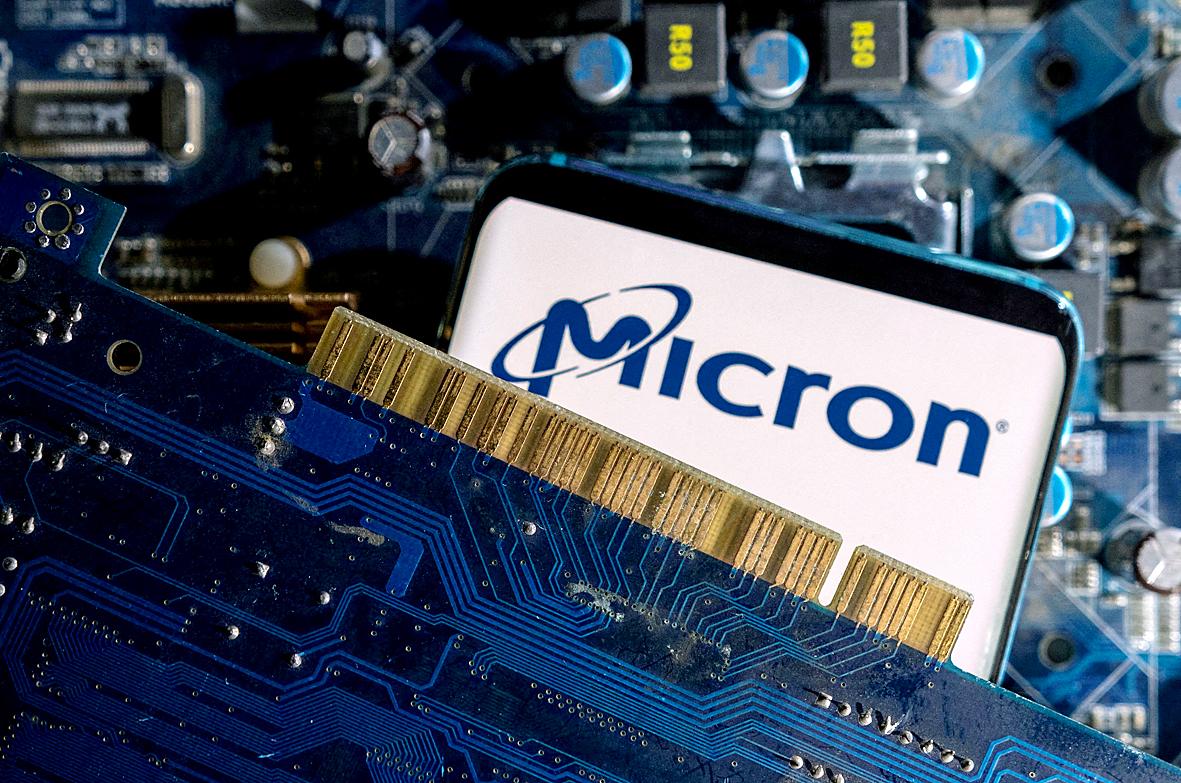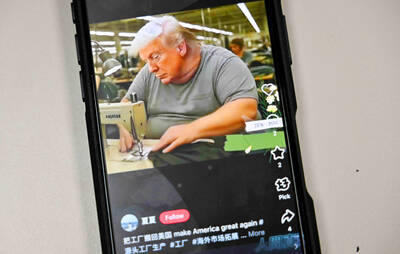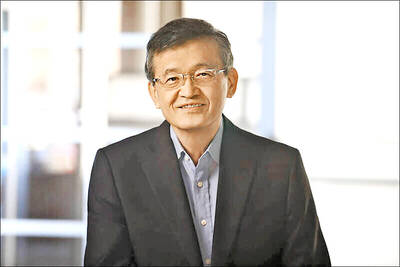Micron Technology Inc is poised to land about ¥200 billion ($1.5 billion) in financial incentives from the Japanese government to help it make next-generation memory chips in the country, according to people familiar with the matter, the latest step in Tokyo’s effort to bolster domestic semiconductor production.
The US company will use the money to install advanced, EUV chipmaking equipment from ASML Holding NV at its facility in Hiroshima to fabricate DRAM chips, said the people, asking not to be identified because the agreement isn’t public. The funding is likely to be announced as Japanese Prime Minister Fumio Kishida was to meet yesterday with a delegation of chip executives, including Micron chief executive officer Sanjay Mehrotra.
Tokyo Electron Ltd spearheaded a rally in chipmaking gear suppliers, particularly those that provide gear or technology that support EUV.

Photo: REUTERS
The financing is the latest sign of Japan’s ambitions in developing its own semiconductor industry, a potential backup to Taiwan amid intensifying tensions between the US and China. The government is already spending billions of dollars to encourage Taiwan Semiconductor Manufacturing Co (台積電) to add production capacity in the country, and to finance a domestic chip venture, Rapidus Corp, with aspirations to make 2-nanometer chips by 2027.
The Micron deal will bring EUV equipment to Japan for the first time, a step toward cutting-edge manufacturing the government has sought.
The agreement is also a retort to Beijing, which launched a cybersecurity review of the Boise, Idaho-based company after US President Joe Biden's administration leveled sweeping restrictions on chip-related exports to China. That threatens the last American memorychip maker’s ability to sell into China, where it now gets about 11 percent of its revenue.
Kishida would receive leaders from the Group of Seven countries, including Biden, in Hiroshima between May 19 and May 21.
“Micron’s Hiroshima factory will play a key role in the G-7’s ambition to strengthen semiconductor chip supply chains,” said Akira Minamikawa, an analyst with the research firm Omdia. “It is the most important location for the US company.”
Micron’s Hiroshima factory, a former production site for the now-defunct Elpida Memory Inc, houses some of the US firm’s best engineers, Minamikawa said. Japanese Ministry of Economy, Trade and Industry said last year it would provide as much as ¥46.5 billion to Micron for production at the facility.
The US company has invested more than US$13 billion in Japan since 2013, including for a push last year to produce what it calls one-beta DRAM chips. The latest funding will help Micron produce with what it calls one-gamma production, a more advanced technology that Micron plans to launch later next year. Suppliers that will benefit from Micron’s investments include Tokyo Electron Ltd, as well as ASML of the Netherlands.
Micron is expected to contribute its own capital to the Hiroshima expansion, although the specific amount could not be learned. The city of Hiroshima is also expected to support the project.
Micron survived fierce industry consolidation through a string of acquisitions in prior downturns. While it’s added scale, something that helps with the brutal cost competition of manufacturing memory, it’s still much smaller than Samsung Electronics Co, the leader in the memory chip industry.
As the industry hit a supply glut this year, Micron reported a loss of more than US$2 billion in the latest quarter, as the selling price of memory chips fell below the cost of production. Micron’s management reacted with what they called a historically quick response, cutting pay, jobs and production and calling on its peers to follow suit. The company has said that the second half of this year should prove the bottom for the market for DRAM particularly if others also cut production.
The only other US company still involved in the memory chip industry at scale is Western Digital Corp, which doesn’t manufacture its own products, instead relying on partner Kioxia Corp’s facilities in Japan to make flash memory. Micron has used its status as the lone US memory maker to push Washington to subsidize the return of domestic manufacturing in the US. Its executives have been leading voices in the lobbying of government.
Unlike rivals Samsung and SK Hynix Inc, Micron didn’t move any of its wafer fabrication work to mainland China. Outside of its home country, Micron has plants in Taiwan, Singapore and Japan, holdovers from past acquisitions.
While that makes Micron less vulnerable to any actions by Beijing, its close relationship with Washington’s efforts to bolster chip production domestically may have contributed to China’s regulatory scrutiny. Like other US chipmakers, Micron is still dependent on the global electronics supply chains that often run through Chinese factories.

Chizuko Kimura has become the first female sushi chef in the world to win a Michelin star, fulfilling a promise she made to her dying husband to continue his legacy. The 54-year-old Japanese chef regained the Michelin star her late husband, Shunei Kimura, won three years ago for their Sushi Shunei restaurant in Paris. For Shunei Kimura, the star was a dream come true. However, the joy was short-lived. He died from cancer just three months later in June 2022. He was 65. The following year, the restaurant in the heart of Montmartre lost its star rating. Chizuko Kimura insisted that the new star is still down

While China’s leaders use their economic and political might to fight US President Donald Trump’s trade war “to the end,” its army of social media soldiers are embarking on a more humorous campaign online. Trump’s tariff blitz has seen Washington and Beijing impose eye-watering duties on imports from the other, fanning a standoff between the economic superpowers that has sparked global recession fears and sent markets into a tailspin. Trump says his policy is a response to years of being “ripped off” by other countries and aims to bring manufacturing to the US, forcing companies to employ US workers. However, China’s online warriors

Application-specific integrated circuit designer Faraday Technology Corp (智原) yesterday said that although revenue this quarter would decline 30 percent from last quarter, it retained its full-year forecast of revenue growth of 100 percent. The company attributed the quarterly drop to a slowdown in customers’ production of chips using Faraday’s advanced packaging technology. The company is still confident about its revenue growth this year, given its strong “design-win” — or the projects it won to help customers design their chips, Faraday president Steve Wang (王國雍) told an online earnings conference. “The design-win this year is better than we expected. We believe we will win

Intel Corp chief executive officer Lip-Bu Tan (陳立武) is expected to meet with Taiwanese suppliers next month in conjunction with the opening of the Computex Taipei trade show, supply chain sources said on Monday. The visit, the first for Tan to Taiwan since assuming his new post last month, would be aimed at enhancing Intel’s ties with suppliers in Taiwan as he attempts to help turn around the struggling US chipmaker, the sources said. Tan is to hold a banquet to celebrate Intel’s 40-year presence in Taiwan before Computex opens on May 20 and invite dozens of Taiwanese suppliers to exchange views